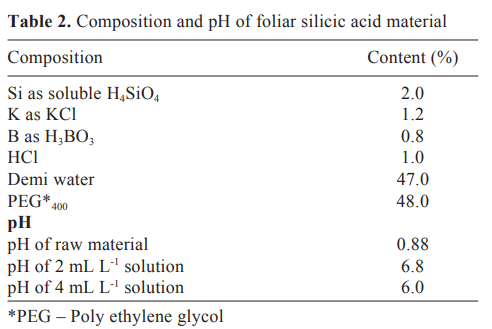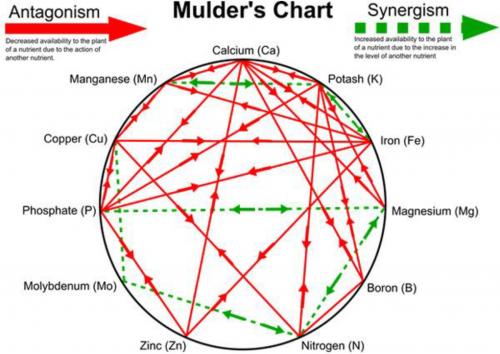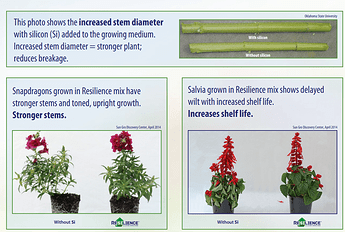So anytime you use a liquid you must convert it using density first before you can find out the % of element?
Yes, but only when the composition of the liquid is given on a weight/weight basis:
- In the case of an individual substance, like sulfuric acid, you would use its molecular chemical formula of H2SO4 to find the amount of sulfur within a given quantity of the substance. And because the molecular formula of a substance (liquid or solid) defines its relative elemental composition by the atomic weight by the number of atoms of each of its elements relative to their sum, you need to use the mass (weight) of your substance addition.
-
For example, elementally sulfuric acid (H2SO4) is comprised of two hydrogen (H) atoms, one sulfur (S) atom, and four oxygen (O) atoms; with atomic weights of 1.00794 for H, 32.065 for S, and 15.9994 for O. So, the molar mass (sum of atomic weights by the number of each atom) of sulfuric acid is (1.00794x2)+(32.065*1)+(15.9994x4), giving us 98.0785 grams (per mole of substance). This means the relative elemental composition of sulfuric acid is (2.01588/98.0785x100), (32.065/98.0785x100), and (63.9976/98.0785x100), giving us the relative percentage of each element comprising sulfuric acid on an individual weight/substance weight (as molar mass) basis of 2.0054% H, 32.6932% S, and 65.2514% O.
-
So, to find the amount of sulfur from a quantity of sulfuric acid, the quantity you’re using needs to be in weight, not volume. The same goes for any individual liquid substance. This means that if you’re adding 15 mL of 98% sulfuric acid, as @danielfp wrote, you need to convert the volume to mass using its density of ~1.840 g/mL, giving you 27.6 grams. Then, multiply the mass of sulfuric acid you’re adding (27.6g) by the mass percent of S within sulfuric acid from above (32.6932%), giving you ~8.83g S from your 15 mL. Next, account for the purity of your sulfuric acid (98%) by multiplying your mass of S by the purity of your sulfuric acid as 8.83*0.98, giving you ~8.65g S from your 15 mL of 98% pure sulfuric acid. Next, convert grams S to mg S, and divide by the total solution volume in liters as 8.65x1000/0.215, giving you ~40233 ppm S. And finally, convert ppm to percent by dividing by 10,000, for an S percentage of ~4.02% (w/w) from 15 mL of 98% in 215 mL of solution.
- Regarding liquid (bottled) fertilizers in the USA, the label gives the elemental percent in weight/weight form. So you need to convert volume to mass, e.g., 10 mL of GH FloraBloom needs to be converted to weight using its density before you find the ppm (mg/L) of its elements in a diluted solution.
-
For example, the density of GH FloraGrow is 1.018 grams per mL. So, 10 mL would weigh ~10.018 grams, as 10x1.018; meaning, for example, if you added 10 mL into 990 mL of water (for a toal of 1 liter of solution), you’re adding 10.018 grams of FlowGrow. And in that case, because 10.018 grams of FloraGrow contains 0.175315 grams of nitrate (NO3), and ppm means milligrams per liter, your solution contains ~175.32 ppm nitrate after converting grams of nitrate to mg of nitrate as 0.175315*1000.
-
However, the math gets a little more involved if we’re talking about the amount of potassium from FloraBloom, for example, because the label reports elemental potassium as potassium oxide (K2O). In this case, you need to refer to the first example, using the molecular formula of potassium oxide (K2O) to find the percent of K and convert the ppm K2O in your solution to K.
So same with carnitine if i wanted to bother calculating how much Cl
No, because L-carnitine HCl is a solid, while sulfuric acid is a liquid. In this case, you would take its molecular formula (C7H16ClNO3) and plug it into a molar mass calculator. Giving you a chlorine (as chloride) mass percent within L-carnitine HCl of 17.9364% Cl.
Then it’s a simple matter of finding the mass (grams) of Cl within your 40 grams of carnitine, as 40x0.179364, giving us ~7.17g of Cl. Next, as above, convert grams to mg and divide by the volume of your solution in liters, as 7.17x1000/0.215, giving us ~33349 ppm of Cl. Finally, convert ppm to percent (33349/10000), giving us ~3.33% Cl.
I will now make a few batches for stability testing in concentrated form and diluted to 20ppm in a pH of 6.
@danielfp wrote he used a pH 6 buffer, so if you’re copying his experiment, you’ll need to make a pH 6 buffer as well. The pH 6 buffer with chemicals your can easily order online and shouldn’t interact with the stabilized silicic acid would probably be a phosphate buffer using high purity anhydrous monosodium phosphate and disodium phosphate (those are analytical grade).
You can use this buffer calculator to find the mass of each salt you’ll need per one liter to create a pH 6 buffer solution. You can read up on making buffer solutions online. I’m not sure what strength should be used. However, I assume 1M would work well, considering the acidity of the silicic acid solution. But defer to whatever @danielfp recommends.
To make a 0.5 L solution of 1 M (1000 mM) pH 6 buffer:
- Add 9.906 grams monosodium phosphate to 400 mL of distilled water in a beaker and dissolve.
- Then, add 61.59 grams of disodium phosphate and dissolve.
- Next, pour the solution into a 500 mL ASTM class A graduated cylinder, rinse the beaker with DI into the graduated cylinder, and top up to 500 mL.
- Then pour the solution into a clean beaker (Glade cling wrap works well), cover, and store out of the light.
To use the pH buffer you could make a 500 mL solution of dilute silicic acid:
- Add 400 mL of your pH 6 buffer solution to the cleaned and dried graduated cylinder.
- Then add your silicic acid and stir with a glass or PTFE stir rod.
- Check the pH to ensure it’s 6.0; if not, make individual >1 M solutions of monosodium phosphate as pH down or disodium phosphate as pH, and use them to adjust the pH to 6.0.
- Finally, top up to 500 mL using the pH 6 buffer solution.
Finally is there a way i can be testing the SI content at home using Mo strips or another device? and the plant-available silicon (PAS).
PAS = silicic acid (monosilicic or orthosilicic).
Using a colorimetric analysis with the molybdate blue method, you can approximately measure silicon and silicic acid at home if you want to spend some money on an instrument. See D859 Standard Test Method for Silica in Water (ASTM D859-05).
But, it would be best if you kept the phosphate buffer solution below 0.1 M (100 mM) or the silicic acid measurement may be significantly inaccurate; otherwise, use a pH 6.0 acetate buffer.
However, sending a sample to a lab for analysis by ICP-AES (Inductively Coupled Plasma Atomic Emission Spectroscopy) or ICP-MS (inductively coupled plasma mass spectrometry) would be more accurate, simpler, and cheaper for a few one-off tests. I’m sure @danielfp can provide advise on the preferred method for this type of testing.



